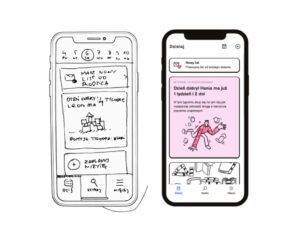The foundation of a successful company is the talent it manages to draw in. However, this can be quite difficult for tech companies, especially SaaS and app development companies, because the nature of their products and services requires their teams to be very dynamic and highly skilled. Not least because their products routinely require updates, new features, and bug fixes.
To make things worse, hiring top-tier tech talent comes with its own challenges. Most seasoned developers are already employed, and nurturing the type of company culture that draws in such professionals can be difficult. On top of that, startups are usually associated with long hours, and are not able to offer competitive compensation. This narrows down the hiring pool dramatically.

Hiring Process
The team you build early on will determine your ability to deliver quality products and services. As a tech company, you will be looking for skilled individuals in technical fields, and as such, the recruitment process will have certain characteristics.
Luckily, jobs in the software/mobile development, data analytics and UX design are in high demand, so you will have a decent enough field of candidates to choose from. In fact, this area of employment is expected to grow by an additional 12% by 2024, according to the Bureau of Labor Statistics
Local talents
So let’s say you’ve decided that you want to go with local talent. If you live in a highly competitive area, the recruitment pool may be restricted by competing companies willing to offer higher rates, and, if you live in a less sought-after city, there might not be too many candidates to choose from. Either way, you want to make sure that you get the best talent at the best price.
Check out some of our best app design ideas: simple, plain and effective
There are several strategies that you can employ at this point. You have the classic job posting/interview style of recruiting. Here, a tech-savvy recruiter will conduct interviews with a pool of candidates in order to find the best people. However, if you are looking for a very specific set of skills, this strategy may end up falling short.
Another strategy would be to join the local tech scene. Events such as meetups, workshops, hackathons and other social gatherings, are usually teeming with potential candidates, some of which may be free agents, while others may be on the lookout for better employment opportunities. You can host these events yourself, or you can send your recruitment team to one of them.
Remote teams
Let’s say you weren’t happy with your local recruitment efforts. You did not find candidates with the right skills, or maybe you were priced out of the market. For whatever reason, you have decided to add some remote workers to your team. How does that work?
Remote work has never been easier, especially in the tech industry. You have a wide variety of software tools at your disposal, including ones that allow you to assign and schedule tasks, organize your team, implement version control for software development, share screens over the internet, and track hourly jobs.
You also have the several advantages, mentioned previously, such as a much larger pool of talent, potential lower wages, and the ability to hire from around the world. On top of that you can also reduce your overhead by an average of $1,900 over a period of nine months per employee, according to a study done by Stanford University. Another study by Staples Advantage has shown that 63% of the most satisfied employees had the ability to telecommute. Employees will also be able to eliminate commute times, and companies that hire remote workers usually experience a boost in productivity.

Should you build an in-house team or hire an app development agency?
This decision will come down to three factors: budget, timeframe and long term strategy.Both options come with their pros and cons, and the best way to decide between the two will be based on your company’s team and vision. For example, when you factor in budget considerations, you will probably be interested in an agency if you are on a tight budget. Building your own in-house team requires that you hire both tech and managerial staff. That is very expensive both in the short and long-term.
If you add the second factor – timeframe, you have considerations such as time-to-market, MPV, and KPIs into account. When the time window is tight, agencies are the way to go. Once a contract is signed they are able to immediately start working on the project. On the other hand, if you have your own team, you will find that it takes a little longer to start a project. However, you will benefit from a higher engagement level, a shorter decision making process, and the fact that all knowledge and expertise remains within the company, adding value to your business.
Finally, you have your long term strategy. This factor is not as black and white as the previous two. When launching an app, you have to keep in mind that users will require updates and new features in order to stay engaged. To accomplish this, you either build a long term relationship with an app development company, work with your own in-house team, or go with a combination of the two, where you outsource parts of the project to another company. The important thing here is to maintain continuity between the development teams. A company you’ve worked with previously will have an in-depth understanding of your project and your customers, which will result in a better end product.
The benefits of hiring an app development company
Studies show that 56% of startups have already outsourced software development to an external partner, and 14.5% of respondents said they are planning to do so in the next year. There are several reasons for this decision:
1. Agencies work with a pre-screened tech team.
When working with an agency, you simply have to sign a contract, and you have an on-boarded, coordinated, well-managed, well-acquainted team of professionals at your disposal.You do not have to go through the process of building a team yourself or screen new team members based on their talents, skills and capacity to work together.
2. Agencies have expertise in a wide variety of fields
App agencies are built to work with every aspect of the latest technological developments. Not only that, if you work with an agency that already has a track record, they will most likely be acquainted with your industry, marketing, and customer service, all of which will help develop a much more effective app.
3. Some agencies are able to leverage their location in order to provide a cost benefit
Working in major cities means that you have to pay higher wages to your employees. This cost is especially burdensome when hiring in tech, where the rate per hour can be quite high. However, if you work with an off-shore development team, you will have to pay a fraction of the cost. Many app development companies build their teams offshore to lower their development costs.
4. Agencies have a well-organized workflow and development process
A mature app development agency has a development process that is highly streamlined. This can shorten development time, and increase the rate at which they can implement updates and feedback from your users.
5. Pricing
Agencies offer a very flexible pricing model. You can hire the agency for an entire project, a component of it, or you can hire several team members to work with you. On top of that, there are different pricing structures such as the fixed price, the time and material model, and the hybrid model.
Here you can find more info on app cost estimation.

Agencies offer a very flexible pricing model. You can ire the agency for an entire project, component of it, or you can hire several team members o work with you. On top of that, there are different pricing structures such as the fixed price, the time and material model, and the hybrid model.
Here you can find more info on app cost estimation.
Early Stage Development
After you’ve decided on how to source your work, it’s time to move on to the development stage. If we follow the first steps in the Software Development Life Cycle, we have an early development cycle that is comprised of: planning and business analysis, determining the technical specifications, and prototyping and designing.
Planning and business analysis
Preparation can go a long way in helping ensure the success of an app. At the planning and business analysis phase, documents such as the business plan or business model canvas can help your developers understand your company, your goals, your market, and your competition. You also want to determine the development tools, methods and languages that will be used throughout the project. If working with an app development company, an RFP can also be of great use here.
Technical specifications
The next step will determine the technical specifications of the app. Here, it’s best to include as much detail as possible – how many screens will the app have, which features will be implemented, what kind of operating system/platform will it run on? All of these specifications will help determine the development cost and timeframe of the app.
Prototyping and Designing
The third step involves prototyping and designing the app. This step sets out the rudimentary visual and functional guidelines of the app, in order to allow for very cheap and expedient user testing. Using techniques such as sketching, wireframing and prototyping, a small startup is able to provide stakeholders and customers with an extremely lightweight version of the app for testing purposes.
For example, a company can use a sketch to visualize the number of screens within the appand the logic behind their interaction. A wireframe has a similar purpose, but the main idea here is to visualize the UI, and how various visual elements interact with each other and with different screen sizes/devices. Finally you have the prototype, which is meant for user testing. It features a very stripped down version of the app, which is used to determine logical breaking points within the UX. Once these three tools are in place, the company will go ahead and design the various app skins.
See also: MVP Development for Startsup and Mature Enterprises




